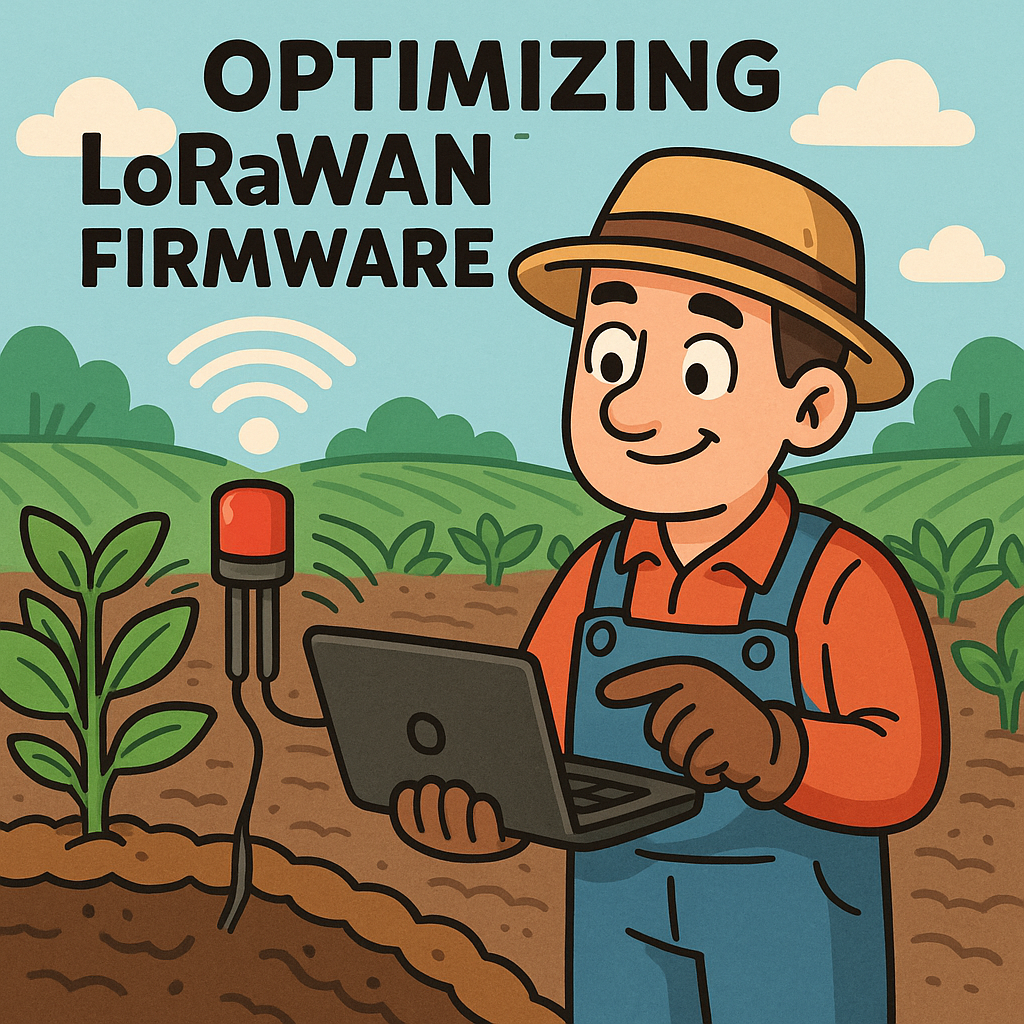Understanding the Challenges of Soil Moisture Sensing
In precision agriculture, efficient water management is crucial for optimizing crop yield and conserving resources. Soil moisture sensors equipped with LoRaWAN (Long Range Wide Area Network) technology provide farmers with real-time data to make informed irrigation decisions. However, designing firmware for these sensors poses several challenges, particularly in optimizing power consumption, data accuracy, and connectivity reliability.
Power Constraints and Firmware Optimization
One of the primary challenges is power consumption. Soil moisture sensors are often deployed in remote locations where battery replacement is impractical. To address this, firmware must be optimized for low power operation. A common approach involves implementing sleep modes to minimize active time. By carefully managing the sleep schedule, sensors can drastically reduce power usage without sacrificing data collection frequency.
For instance, using interrupts to wake the microcontroller only when a specific moisture threshold is reached can prevent unnecessary data transmission. This approach not only conserves battery life but also ensures that the sensor only communicates crucial information over the LoRaWAN network, which is inherently designed to handle low-bandwidth data transmissions.
Data Accuracy and Calibration Algorithms
Accurate soil moisture readings are vital for effective irrigation management. However, sensors can be influenced by various environmental factors such as temperature, salinity, and soil type. Therefore, implementing robust calibration algorithms in the firmware is essential. These algorithms can adjust readings based on historical data and environmental factors.
A practical implementation might involve a multi-point calibration strategy, where the sensor is calibrated at different moisture levels to create a more accurate curve. This calibration can be performed periodically and adjusted based on the time of year or crop type, allowing for dynamic optimization of sensor readings.
Real-World Design Trade-offs
When designing the firmware, trade-offs are often necessary between performance and resource constraints. For example, increasing the frequency of moisture readings will yield more data and potentially better irrigation decisions, but it also leads to higher power consumption and increased network traffic. Balancing these aspects requires a thorough understanding of both the agricultural needs and the technical limits of the hardware.
Another trade-off is in the choice of LoRaWAN parameters. For instance, adjusting the spreading factor can enhance communication range but at the cost of increased airtime and power consumption. Engineers must analyze the deployment environment and choose parameters that suit both the range requirements and the energy constraints of the sensor.
Enhancing Connectivity and Data Integrity
Reliability of data transmission over the LoRaWAN network is another critical aspect. Given the nature of agricultural fields, sensors may experience interruptions in connectivity. Implementing a message acknowledgment system within the firmware can help ensure that data packets are received correctly. If a sensor does not receive an acknowledgment from the gateway, it can retry sending the data, thereby enhancing overall data integrity.
Additionally, incorporating data compression algorithms can help reduce the size of transmitted data packets, making them less prone to errors during transmission while also saving bandwidth. This is particularly useful in environments where multiple sensors are transmitting data simultaneously.
Future Considerations and Innovations
The landscape of precision agriculture is continuously evolving, and so must the firmware of soil moisture sensors. Emerging technologies, such as machine learning algorithms, can be integrated into the firmware to predict soil moisture levels based on historical patterns and current weather conditions. This predictive capability can help optimize irrigation schedules even further, reducing water waste and improving crop health.
Moreover, as LoRaWAN technology advances, firmware can leverage new features such as adaptive data rate mechanisms, allowing for smarter, more efficient communications that adapt to changing environmental conditions.



